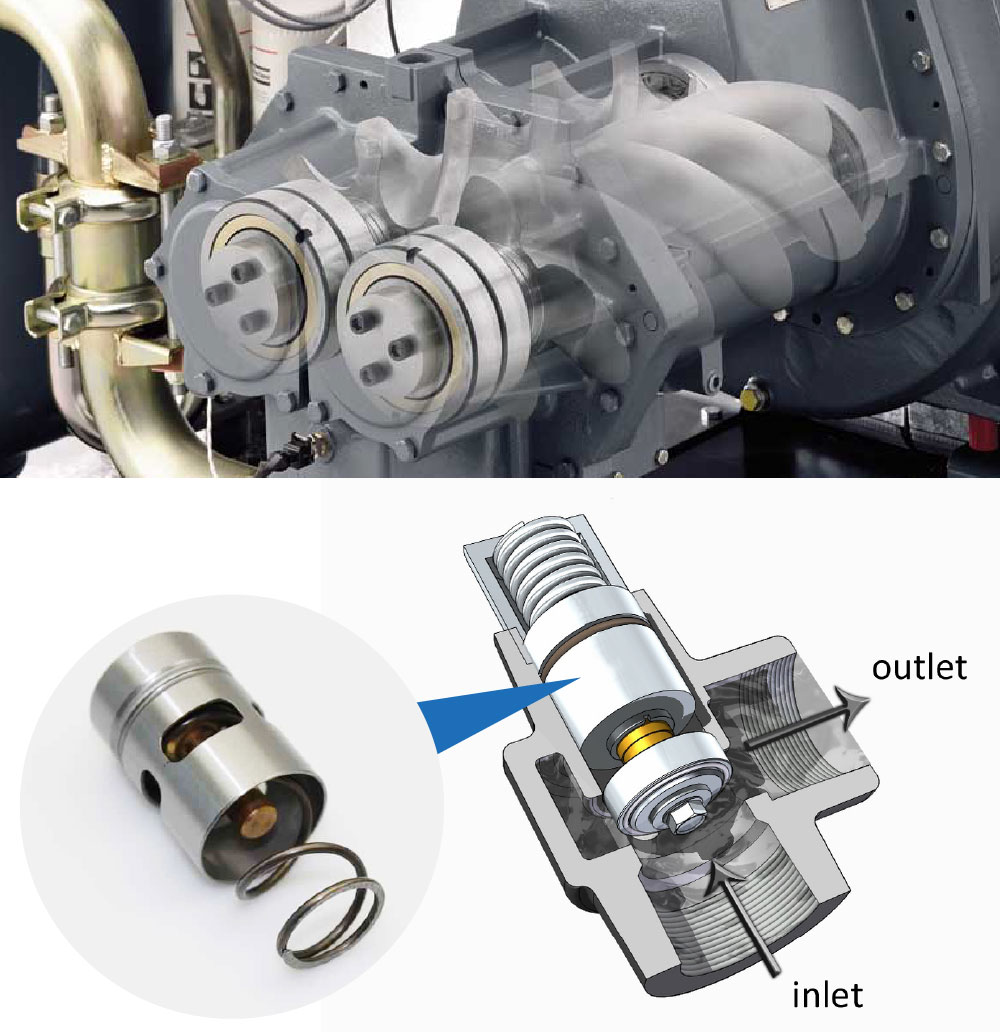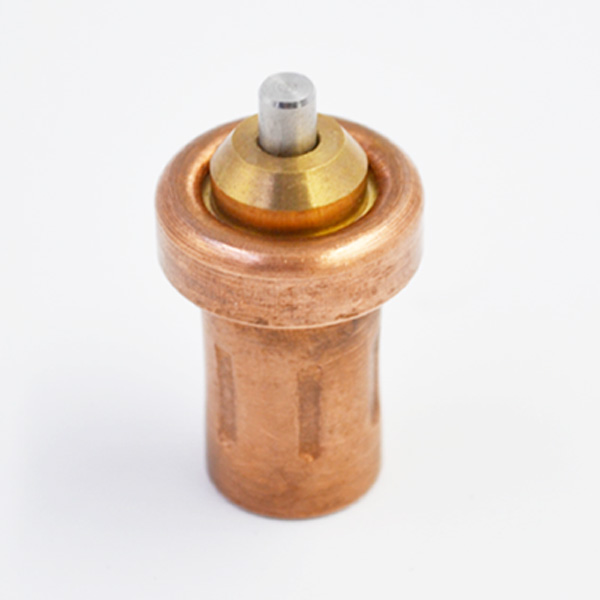Aiming at the problems of high cost, poor construction effect and inconvenient application of construction hoist in most construction sites, this paper presents a construction hoist control system based on ARM technology, which takes STM32F103 as the main controller and realizes the automatic control of construction hoist through software programming. The experimental results show that the parameters function of the system meets the design requirements and greatly improves the problems of low operation accuracy, inconvenience in application and high cost of the existing lifting controller, which not only guarantees the safety of construction, but also reduces the construction cost and increases the work efficiency, and is suitable for large-scale popularization and use. At present, in some construction and factory production, the vertical lifting machinery represented by construction hoist and construction elevator plays an important role. With this kind of equipment, materials and construction personnel can be transported on the ground and between floors. Winch control method is widely used in construction site and factory production, thermostatic element which has poor positioning accuracy and high labor intensity. Therefore, it is necessary to adopt construction hoist with automatic control function. Embedded microcontroller is small in size and compact in structure. It can be buried in the controlled device as a component to complete the function of signal control. In order to meet different application requirements, a series of single-chip microcontrollers generally have a variety of derivatives, each of which has the same processor core and different configuration and packaging of memory and peripherals. This can match the application requirements to the greatest extent, thus reducing the power consumption and cost of products. This paper presents a construction lifting control system based on ARM technology. This system uses the characteristics of embedded microcontroller such as small size, compact structure, low power consumption and cost, especially suitable for signal control. It designs a lifting automatic control system which is easy to popularize and whose parameters function can meet the requirements of demonstration. It is embedded. The circuit is the core of the controller, and the embedded chip is used to reserve abundant interfaces for future extended functions. The peripheral circuit is supplemented by driving motor circuit and power circuit. The circuit design is improved, and the software design is carried out. The reliability of the system is enhanced, the automatic control of materials and construction lifts is realized, and the operation of manual control lifting equipment is improved. The problems of low accuracy and poor application effect are discussed. This system takes STM32 embedded system as the core, designs and realizes the automatic control of material and construction elevator from two aspects of hardware and software. The working logic of the system is as follows: the key is used to control the motor to open and close, the liquid crystal display (LCD) and the water lamp are controlled by software programming, and the upward and downward directions are indicated by the water lamp. The building elevator arrives at the designated working platform through key setting, and the output of double pulse width modulation (PWM) controls the elevator running up and down and the action of switching doors, respectively. The running direction of the elevator is simulated by LED pipeline lamp.

As shown in Figure 1, the system design mainly includes embedded chip STM32F103, key module, display circuit module, serial module, power module, PWM output module and LED pipelining module. The display circuit is composed of a Transistor-Transistor Logic (TTL) LCD screen. As shown in Figure 2, two PWM outputs are connected with two small 5V motors to indicate the upstream and downstream of the open door; the upstream and downstream are connected with the running water lamp; the upstream and downstream are turned on and off; the switch door is connected with the motor, and the forward and reverse are turned on; the display is displayed by TTL liquid crystal. Because the smallest embedded system is a classical circuit, which can be found in all kinds of reference books, it is not introduced here.
The following mainly introduces the circuit design of key module, display circuit module, PWM output module and LED pipeline lamp module. LCD displays the clock and the current working platform. When the elevator runs to the target platform, the platform number flickers twice in 1 s.

When the system is powered on, the elevator is located on platform 1 by default, and the elevator door is open by default. The key circuit is shown in Figure 3. Four keys are used to represent four working platforms. When pressed, the platform to be reached is indicated by lighting the LED (LD1-LD4, LD1 corresponds to platform 1, and so on). When the elevator reaches the target platform, the corresponding LED lights are turned off. Press the button corresponding to the current platform is invalid. Multiple target platforms can be set at a time. When the upper and lower platforms have keys, the running order is up and down first. After pressing the last button for 1 s, the analog motor starts to run: the elevator closes first, then opens the door after running to the next floor; if there is a target platform, it stays for 2 seconds after opening the door, then closes the door, and continues to run to the next target platform until there is no target platform.
When setting up multiple target platforms, the lifting sequence of the elevator has nothing to do with the order of keys. First, the ascending platforms are completed in the order from low to high, and then the descending platforms are completed in the order from high to low. The key is invalid during the operation of the motor. As shown in Figure 4, two PWM outputs control the upstream and downstream motor (PA6) and the shutter motor (PA7) respectively, and one direction control signal is used to control the direction of the motor. The high level of PA4 indicates that the elevator goes up, whereas the elevator goes down. The high level of PA5 indicates that the elevator opens the door and vice versa. The motor running time of upper and lower platforms is 6 seconds, and the lift closing time is 4 seconds. The frequency of up and down motor control signal is 1 kHz. When the elevator goes up, the duty cycle of PWM signal is 80%, while when the elevator goes down, the duty cycle of PWM signal is 60%. The frequency of the control signal of the switch door motor is 2 kHz. When the elevator opens the door, the duty cycle of PWM signal is 60%, and when the elevator opens the door, the duty cycle of PWM signal is 50%. When the elevator goes up and down, four LED (LD5-LD8) make up a flow lamp to indicate the direction of the elevator. In the design, the flow mode and time interval of the flow lamp should be reasonably selected, as shown in Fig. 5. The software design of the system is shown in Figure 6. After the system is initialized and the clock is displayed and the button of the target platform is pressed horizontally, the corresponding LED lights will light up. With the delay subroutine, the system runs to the top platform of the target platform after a delay of 1 s and opens the door. The platform number flickers twice in 1 s, and the platform corresponding to the LED is extinguished. When there is a remaining target platform, stay 2 seconds after opening the door, then close the door, and end when there is no target platform. Two PWM outputs are connected with two small 5V motors to indicate the upstream and downstream direction of the door, and then the upward direction and downstream direction are indicated by the flow lamp. The upward direction is indicated by the flow lamp, and the downward direction is indicated by the downward direction of the flow lamp. The positive and negative rotation of the motor means opening and closing the door, the positive rotation means opening the door, and the reverse represents closing the door. Before debugging the specific circuit, the circuit should be checked first, and then checked step by step according to a certain order according to the circuit diagram. Attention should be paid to the connection between power supply and ground, the direction of diode and the polarity of electrolytic capacitor, the pin connection between integrated circuit and transistor, the solder joint soldered firmly, the virtual solder, etc. According to the direction of the signal, each module is debugged separately. After debugging each module, the debugging scope is further expanded, and finally the overall debugging is completed. After the debugging and debugging of PROTEUS and keil C software, the product is completed, and the next step is the comprehensive debugging of the system. When the system is powered on, as shown in Figure 7, the system displays the initial interface, which can be adjusted by keystrokes. With the development of construction industry, the requirement for safety and convenience of construction elevator is getting higher and higher. The development of electronic control technology also brings the possibility for the development of construction elevator.
Through the application of STM32 chip as the core control element, combined with other modules, the construction lifting can be automatically controlled, which can better meet the safety needs of construction lifts. In this paper, a construction lifting control system based on ARM technology is designed. Embedded chips are used as main control chips, which reserve abundant interfaces for future expansion functions. From the point of reliability, the circuit design is further improved and the software design is carried out. All parameters and functions meet the design requirements. Because the system uses STM32F103 chip with low price and abundant resources, and other materials also use common electronic components, the cost is low, the control is convenient, safe and reliable, which fully meets the requirements of the construction site. After field verification, the effect is good, and it is suitable for the popularization and application of the construction site.
